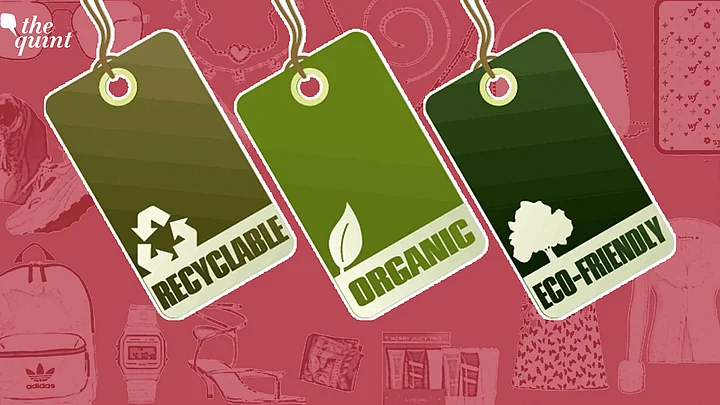The 2000s fashion, popularly known as Y2K fashion, took the world by storm in 2020-21. Stringy and minimal tops, chain jewellery, cheeky skirts and low-rise denim – all the 2000s trends seem to have made a comeback, including some questionable ones. From young teenage girls to women in their 40s, all can be seen sporting these looks in their everyday lives. Small fashion houses, giant fast fashion conglomerates and luxury ateliers were quick to jump on the 2000s bandwagon. The minimal aesthetic of the fashion trend makes it easy to produce and is a free-for-all, which is why quality takes a backseat. The quirky aesthetics of skin tans, bucket hats and bejewelled jewellery have also come to be associated with sustainable fashion and upcycling. What is it that makes Y2K fashion so popular? Moreover, is it as sustainable as people claim?
'Thrift' Fashion Boomed During Lockdowns
With a global lockdown in 2020 due to the COVID-19 pandemic, the global apparel and textile industry took a major hit, expecting a 25-35 per cent decline in 2021. Moreover, as anxieties around the pandemic grew, more and more people refrained from spending on new expensive clothing and fashion for everyday wear and began to “thrift” or buy “second-hand clothes”. The Y2K fashion is claimed to have revived due to this shifting trend in consumption of clothing and hence comes to be associated with sustainable and ethical fashion.
But before examining its sustainability, it might be insightful to know what makes Y2K so popular.
Amongst the chaos and confinement of 2020, Y2K fashion rose to popularity. One of the reasons may be that in a time of emotional vulnerability, Y2K was reminiscent of a past that looked perfect. In times of crisis, such as a pandemic, it almost became a means of solace and escape, where people took to fashion as a means of escapism. The desire to go back to the normalcy of the past translated into fashion choices.
However, while obsessing over Y2K, what we overlooked is the unhealthy body image it propagated with skimpy and petite figures, excluding all other body shapes, and thus creating a problematic mindset, reaffirming the so-called ‘ideal’ beauty standards and body goals.
Ethical Fashion Only for the Rich?
Another kind of social barrier that the trend creates is between those who choose to consume it and those who don’t. As much as Y2K appears to be accessible, it is only a very upper-class and niche audience that is actually able to engage with it. The truth lies in the fact that the archival of this fashion trend with its highly problematic style is something that might not register even with the younger generation.
The accessibility of Y2K fashion also raises questions about sustainability and ethics in fashion. The pandemic led to a boom for the thrift industry, with new online thrift stores popping up every day. It is expected to grow by double in the next five years, with a value of $77 billion. While small and local businesses sold thrift clothes, luxury ateliers relaunched their old archival designs as one-of-a-kind vintage pieces. Young women began to upcycle their mother’s clothing from the 2000s and thrift stores and charity shops made available their clothing at affordable prices, which led to the conception of Y2K as a sustainable fashion trend. Though the industry for second-hand clothes has been at its zenith in 2021, authentic vintage pieces are hard to come by and are not affordable by all. The gap that this creates between the demand and supply of clothing then gets filled by large fast fashion conglomerates like Boohoo, Zara, H&M and Fashion Nova.
So, while some people compete in auctions to get that one black mini dress, fast fashion companies fulfil the rest of the demand by flooding the market with their supplies.
Fast fashion sales, despite growing environmental consciousness, is expecting a steady 3.1% rise by 2027. Though the revival of Y2K on TikTok and Reels during the lockdown might have been revolutionary and sustainable in its conceiving year, the trends that have been following into 2021 have catastrophic consequences. The association of Y2K with sustainability, however, is ironic due to the aesthetic’s emphasis on non-sustainable materials like chains, plastic charms, mesh, resin, satin and rhinestones.
But Fast Fashion Has its Merits, Too
However, this does not mean that we can discard the trend altogether. The fast fashion industry is also sought after because it often brings accessibility to lower-income consumers that slow fashion excludes. Fast fashion, in its desire to target a larger customer base, is also more inclusive of different sizes, unlike slow fashion.
In many ways, fast fashion democratises the space of fashion (which is notoriously known for exclusivity), enabling a larger audience to engage with it.
Thus, as part of the generation that enabled the revival of an iconic trend, the responsibility lies with us to change and rewrite the narrative surrounding Y2K fashion and its exclusivity, and to make it accessible and acceptable for everyone.
(Muskaan Kanodia is a student at Ashoka University interested in the intersection of Visual Arts, Fashion, and Gender. This is an opinion piece and the views expressed above are the author’s own. The Quint neither endorses nor is responsible for the same.)
